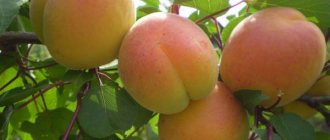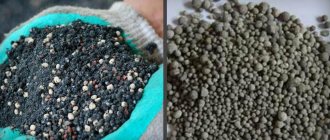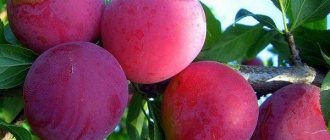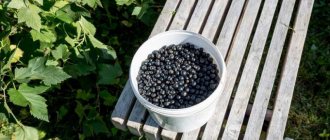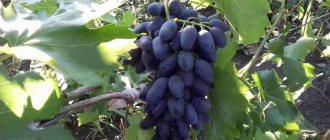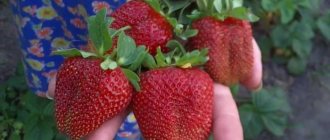In central Russia, Shubinka cherries have been popular for quite some time. The origin of this variety is unknown; most likely, it belongs to folk selection. But our heroine is included in the State Register of Breeding Achievements of Russia. Variety testing began in 1947, after which, in 1959, the variety was included in the register with approval for the Central, Northwestern and Volga-Vyatka regions. The originator was the Federal State Budgetary Institution “All-Russian Selection and Technological Institute of Horticulture and Nursery Growing” and the Federal State Budgetary Institution “Federal Research Center All-Russian Institute of Plant Genetic Resources named after. N.I. Vavilova." There is an opinion that it was from Shubinka that identical varieties originated - Krasnopakharskaya and Korostynskaya.
Pros and cons of the variety
The advantages of the variety are:
- Winter hardiness.
- It does not require special care.
- High yield.
- The variety is late, so the berries are picked even in September.
- When overripe, they do not fall off.
- Well preserved.
But the hybrid also has its disadvantages:
- The berries are small and slightly sour, so they are rarely consumed fresh.
- Disease resistance is low.
But despite the shortcomings, the variety remains popular among gardeners and simply amateurs, as it is quite winter-hardy and does not require special care.
Agricultural technology
In tolerance regions, planting of the variety is preferred in the spring. Choose a site that is sunny, well-ventilated, but protected from the prevailing winter winds. The crop is not picky about soils, but develops best on loose and fertile loams. The plant does not like flooded or low-lying areas. In such areas, the tree often gets sick, stops developing, and bears fruit poorly. To increase the resistance of cherries to diseases, preventive treatments should be carried out on time. Don’t forget that proper pruning is a good way to increase yields and prevent diseases.
It’s not for nothing that Shubinka is called a garden classic. Over the years, it continues to grow in many family gardens, even as new and improved varieties have become available. Indeed, our heroine does not disappoint. It has excellent frost resistance, albeit low, but stable yield and universal purpose. In addition, it serves as an excellent pollinator. Yes, and it is undemanding in care. Of course, this cherry also has disadvantages, which are expressed in mediocre taste, wet tearing and insufficient resistance to coccomycosis. But it’s worth remembering that the variety is a folk one, that is, its creation was not conjured by breeders who instilled in the crop characteristics that were unusual for it.
The Shubinka cherry variety is one of the oldest species, and is also very popular in mid-latitudes. Tall, beautiful tree. Widely used in industrial circles. This hybrid is considered durable, the fruit pulp is juicy, sweet and sour and is suitable for use in twists and cooking. The hybrid needs plenty of sun and shelter from the wind.
Main characteristics of the variety
At the moment, Shubinka cherry ranks second in the list of the most popular and widespread varieties. Due to its qualities, it is ideal for industrial production. But recently, cherries have been replaced by other varieties.
Wood appearance
The height of the tree is 2-4 meters. It has a pyramidal crown shape. Foliage density is average. The shoots and branches are very thin, brown in color with a slight gray tint. The inflorescence of the tree is large, the leaves are long, round, green in color with a slight shine, and smooth to the touch. The buds are medium-sized, brown in color. The bark is strong and does not flake.
The tree is strong, but thin, therefore susceptible to sudden changes in weather.
Fruiting
The tree bears fruit late; berries are expected closer to August. Harvest until mid-September. Fruiting begins in the 4-5th year of life. Up to 25 kilograms of berries are collected from the tree. Therefore, the variety is good for processing. To ensure a good harvest, several more trees are planted on the territory.
Description of the fruit
Cherry berries are medium in size, weighing from 2 to 4 grams. The skin is dense, soft red in color with a pleasant fresh aroma. The pulp is loose, juicy, not very sweet, therefore it is most often used in canning. The fruit has low sugar content. The stone is small, round in shape, and difficult to separate from the pulp.
See also
Treatment of gum disease in cherries using folk remedies and chemicals
Read
Pollinators
Cherries are partially self-fertile, so they require additional pollinators for high yields. The best pollinators for the tree are Lyubskaya, Anadolskaya, Kharitonovskaya, Griot Podbelsky, Shchedraya, Saika, Griot Ostgeimsky. If there are no other trees on the site, the harvest will be from only 30 percent of the flowers. Cherries are also pollinated by sweet cherries. The tree is also pollinated by insects.
Ripening time and yield
Cherries ripen late. There is no rush to pick the fruits, since the berries adhere well to the stalks. The amount of harvest depends on the quality of the pollinator, weather, soil and plant care.
Transportability and use of berries
The cherries are removed along with the stem, then they last longer during transportation and do not leak juice. Also, the peel will protect the pulp from damage, so the fruits can be transported over long distances.
Winter hardiness
The variety is winter-hardy, but still requires a moderate climate. In this case, the tree is insulated for the winter. This is especially true for the tree trunk circle. Young trees are covered with straw and paper from thermal bags. Then pour a small pile of snow onto the plant. With the arrival of spring, the protection from the trunk is removed so that the tree does not dry out.
Susceptibility to diseases and pests
The Shubinka cherry variety is susceptible to diseases such as powdery mildew, fruit rot and bacteriosis. Often the tree is affected by coccomycosis. At first the leaves get sick, but if the pathology is left to chance, the berries may also suffer. Shoot moth is another pest that damages shoots and buds.
Appearance of Shubinka cherry
Let us consider separately the appearance of the fruit tree and the fruits themselves.
Tree
Shubinka's tree is tall, more than 4 m, with a spreading pyramidal, not very dense crown.
The shoots are thin, light brown, with a greenish tint and a faint gray coating. The main branches are thick and dark brown.
The leaves are green, dark, medium-sized, oval, with sharp tips and bases, and fine teeth along the edges.
The flowers are white, small, growing several in an inflorescence.
The petals are loosely pressed, forked at the ends.
Fruit
The berries are small, sometimes medium, weighing 2.2-2.6 g, round, flattened at the side seam, dark red or burgundy in color. The pulp is loose, dark, aromatic and juicy, but very sour, astringent, with a not very pleasant taste.
Fairy, Black Large and Toy have sweeter and tastier fruits.
The stone is small, round, and separates from the pulp very poorly. The fruits are firmly held on a long, thin stalk, so they do not fall off when overripe.
Planting a crop on the site
Cherries require a warm, sunny place. Usually the tree is planted near a fence or wall at a distance of 6-8 meters. The variety is not planted in lowlands, as there is increased dampness in the soil.
Required soil composition
The soil should not be too acidic and damp. Before planting, the soil is freed from weeds, dug up and fertilized. Take 1.5 kilograms of compost and 50 grams of sulfate or potassium phosphate per square meter.
Terms and rules for planting seedlings
They prepare the soil in the fall. They dig up the ground and remove weeds. Afterwards the area is fertilized. A month later they begin to dig a hole. The size of the pit is 70 x 70 centimeters.
If several trees are planted at once, then the distance between the holes should be 6 meters.
The bark is laid out at the bottom of the prepared hole and pegs are placed. Then they put humus or manure and sprinkle it with a layer of fertile soil. The seedling is chosen with a height of 60 centimeters, its age should be 2-3 years. After it is placed in the hole, the roots are straightened and buried, tied to a stick and compacted with earth. Make a hole around the plant, pour out 4 buckets of water and cultivate the soil with humus.
Description
The tree has sufficient growth vigor. The height of an adult cherry tree exceeds four meters. The broad pyramidal crown of medium density becomes weeping with age. The main branches are thick, dark brown, the shoots are medium and thin, with greenish bark and a grayish coating. The leaves are thin, of regular size, oval in shape, with a pointed apex and a wedge-shaped base. The petiole is average in all respects. Fruiting occurs like bush cherries - on annual shoots. The flowers are white, the corolla is formed by petals loosely pressed to each other.
The berries of the variety are small, usually their weight ranges from 2.0 to 2.5 grams, but not more than 3.0 grams. The shape of the fruit is flat-round, the ventral suture is well defined, the funnel is shallow. The skin is thin, glossy, dark red in color. The pulp is also dark red in color, quite juicy, medium-dense, somewhat loose in consistency. The taste is ordinary, sour, with a slight bitter-astringent aftertaste, the aroma is strong, cherry. Experts say that the longer cherries ripen on the branch, the more sugar they accumulate, which means they become tastier. The peduncle is long and thin, the separation from the fruit is wet. The stone is round in shape, medium in size, and difficult to separate from the pulp.
We organize competent care
In the first year of life, the plant is not fertilized, only the area around the tree is cleared of weeds. They begin to apply fertilizers only a year after planting. Water the plant regularly.
Irrigation and fertilization
Water the plant at intervals of 20 days. Each time, pour out up to 20 liters of warm water. Fertilizing begins a year after planting. Pour out water with potassium nitrate. At the beginning of summer, the tree is fed with ammonium nitrate.
Organic and mineral fertilizers are used with the arrival of autumn. This is done to protect the plant from frost. First, use a superphosphate solution.
Crown formation
The first pruning is carried out when planting the tree in the ground. Leave 6-7 strong branches. The procedure is carried out every year for 5 years. When the crown is created, trimming is stopped. The condition and health of the cherry are monitored; diseased branches are pruned and destroyed.
See also
Description of the Magaleb cherry variety and rules for growing from seeds
Read
Prevention of insects and diseases
Shubinka cherry is susceptible to the negative effects of coccomycosis and shoot moths. Leaves are often affected and should be trimmed and burned. In order to get rid of bacteriosis and powdery mildew, use a solution of Bordeaux mixture (60 grams per 10 liters of water).
Rot is destroyed using colloidal sulfur (40 grams per 5 liters of water). They get rid of aphids using Oxychom (80 grams per 10 liters of water). Process at intervals of one day. It should be remembered that a tree cannot grow and fully develop in low places; there it will often get sick. Prevention is carried out every year. Especially at the end of the growing season and with the arrival of autumn.
Preparing for winter
Cover the tree trunk circle and mulch the soil to a depth of 10 centimeters. The mulch should not touch the tree trunk, otherwise the bark will rot and rot.
Young trees are tied to prevent damage to the bark. Preparing cherries for winter depends on the place of growth. Usually preparation is mandatory. It is important to protect the tree trunk and root system from frost.
Story
The name of the Vladimir cherry is associated with the name of the city of Vladimir. It is believed that the first specimens appeared there from the 7th to the 12th centuries thanks to monks who brought seedlings from Greece. According to another version, the tree was brought from Kyiv by Prince Andrei Bogolyubsky, who founded the Patriarchal Garden. In the 19th century, the city of Vladimir was famous throughout Russia for its cherry orchards, the number of which reached 400.
In the Patriarchal Garden, 5 varieties of Vladimir cherries grew: Roditeleva, Saika, Levinka, Bel and the famous Vasilyevskaya cherries, as well as pears, apple trees and other fruit and berry crops.
Today the Vladimir cherry is one of the symbols of the city. At the entrance to the famous Patriarchal Garden there is a monument to the berry in the form of granite fruits with bronze branches.
A monument to the Vladimir cherry was erected at the entrance to the Patriarchal Garden in Vladimir
The variety was zoned in 1947 and has since been popular among gardeners.
The basis of the garden was made up of cherry trees, mainly Vladimir cherry
Reproduction methods
The seed method is used very rarely. For propagation, cuttings, grafting or propagation by root shoots are used. Cuttings are harvested in July. To begin with, they are soaked in water. The cutting is planted vertically in a box and its end is deepened 3-4 centimeters into the planting mixture. The distance between them should be 7-8 centimeters. Plants are placed in a warm, bright place, but direct sunlight is eliminated. When the cuttings take root, the film over them is removed. The seedlings overwinter in trenches. They are planted in the spring.
Rootstocks are also often grown from seeds. To do this, take well-dried material. Sow in autumn or spring before frost.

